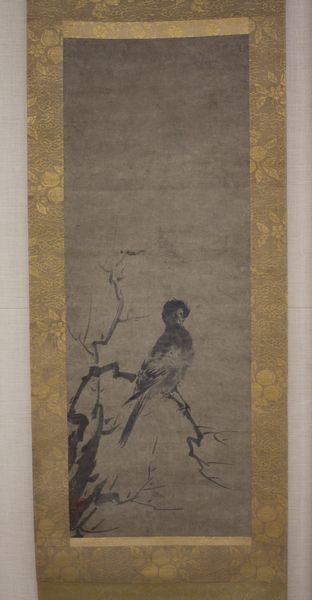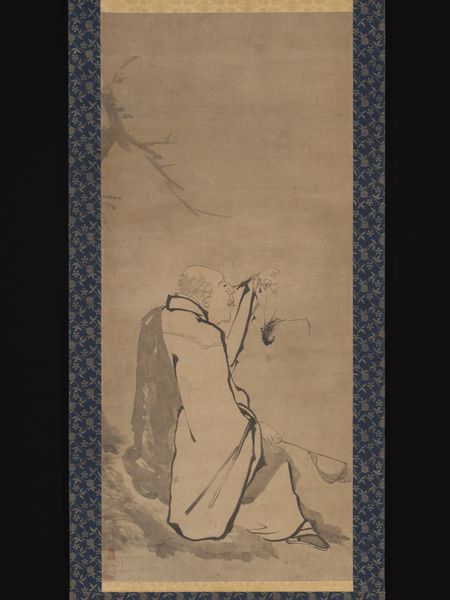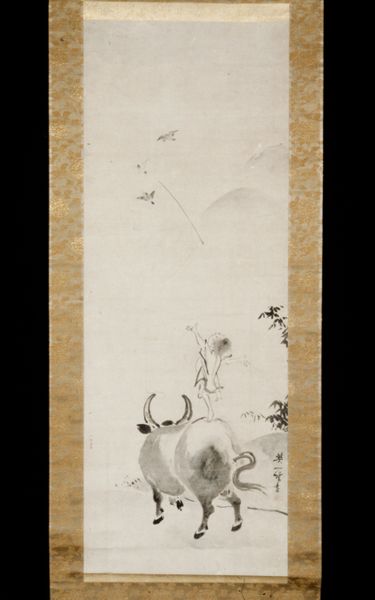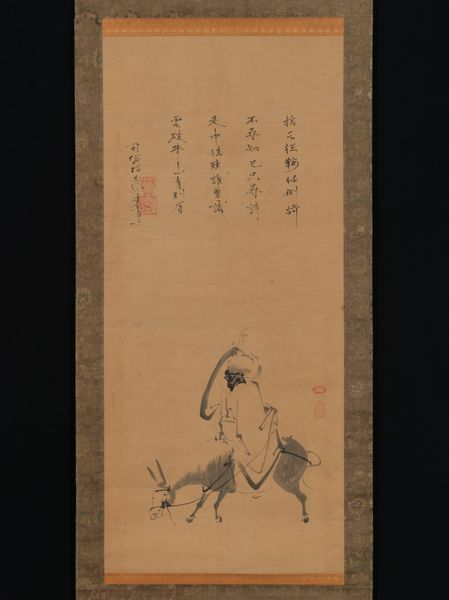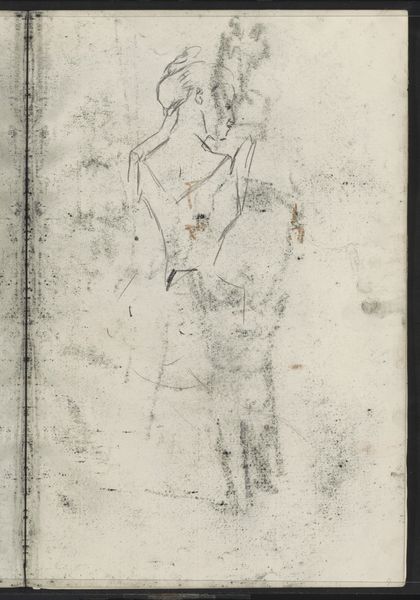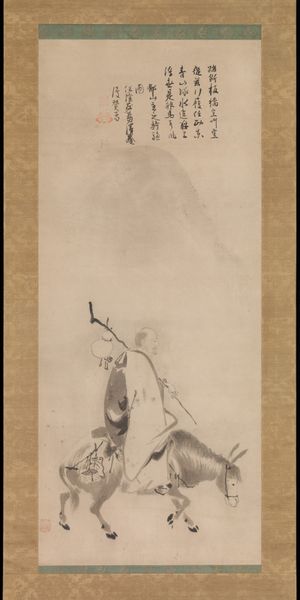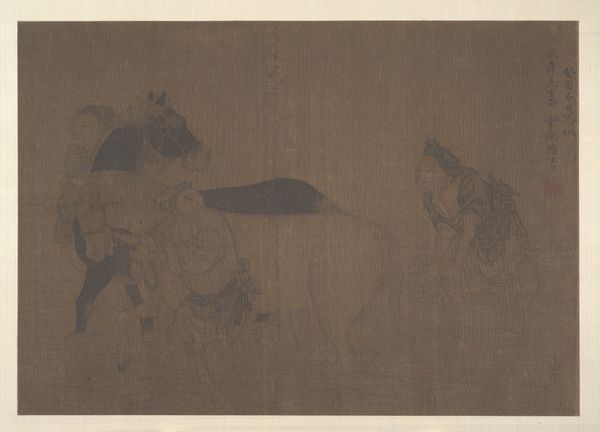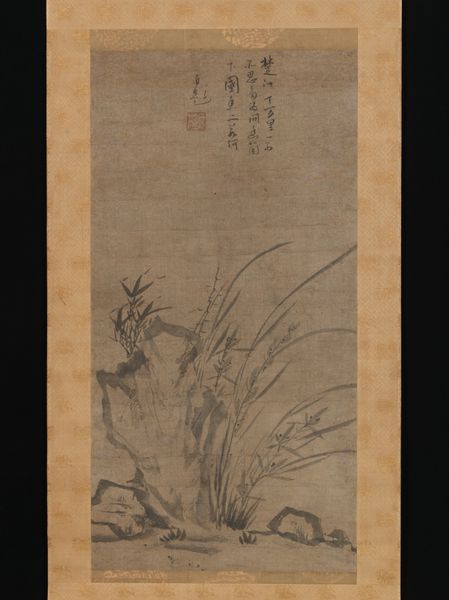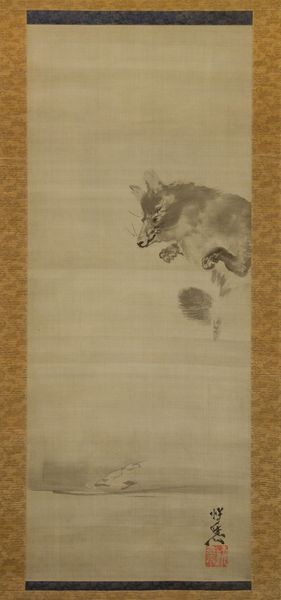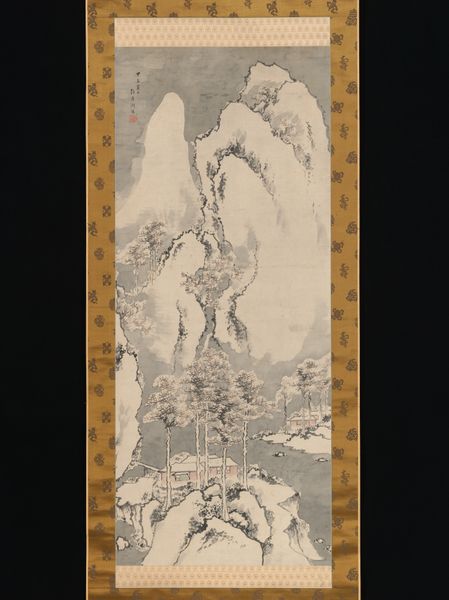
drawing, ink
#
portrait
#
drawing
#
aged paper
#
toned paper
#
narrative-art
#
light earthy tone
#
asian-art
#
charcoal drawing
#
ink
#
brown and beige
#
earthy tone
#
23_muromachi-period-1392-1573
#
neutral brown palette
#
tonal art
#
neutral shade
Dimensions: Image: 21 1/16 × 11 9/16 in. (53.5 × 29.4 cm) Overall with mounting: 54 3/4 × 15 5/8 in. (139 × 39.7 cm) Overall with knobs: 54 3/4 × 17 5/8 in. (139 × 44.7 cm)
Copyright: Public Domain
Editor: Right, so this is "Oxherding" by Sekkyakushi, dating back to the Muromachi period, made with ink on toned paper. It feels incredibly understated, almost ephemeral. There’s a meditative quality. How do you interpret this work, especially considering its historical context? Curator: The "Oxherding" series is deeply rooted in Zen Buddhism, and its emergence during the Muromachi period tells us a lot about the evolving patronage of art institutions. This drawing likely functioned within a context of spiritual practice and dissemination of Zen teachings. These images often served as pedagogical tools. Where do you see the "politics of imagery" at play? Editor: I see that it promotes an ideological stance regarding spiritual fulfillment. It shapes a narrative around achieving enlightenment. Curator: Precisely. Think about the role of monasteries during the Muromachi period and their patronage of the arts. These images, disseminated through the monastic networks, reinforced specific modes of thinking, and served specific functions within their rituals. It promoted a very controlled view of the religion and what the establishment expected. Does knowing about that context shift your understanding? Editor: Definitely. I was focusing on the individual's journey, but seeing it as a form of institutional promotion is really interesting. Thank you. Curator: Likewise, it's refreshing to consider the art historical context anew. Seeing art's interaction with society always allows fresh perspectives.
Comments
No comments
Be the first to comment and join the conversation on the ultimate creative platform.



